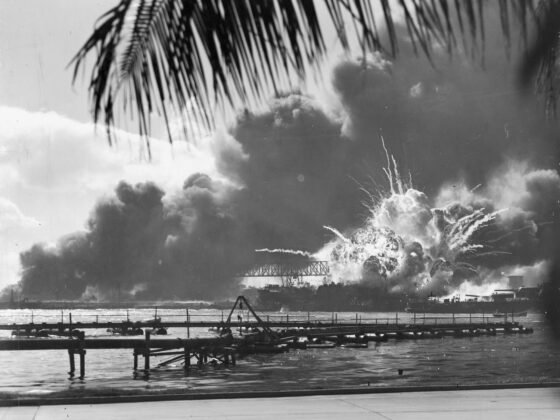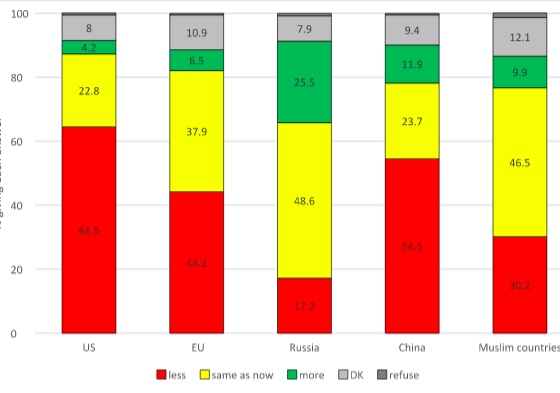(PONARS Eurasia Policy Memo) Almost two years have passed since the Velvet Revolution in Armenia. By now, the elite rotation is almost complete. The former ruling party, the Republican Party of Armenia (RPA), does not hold a single seat in the new parliament. It failed to cross the five percent threshold in the post-revolutionary, parliamentary election in December 2018. The senior positions in the executive have been filled by new people. All ministers and most deputy ministers were replaced immediately in the spring-summer of 2018. The heads of Armenia’s eleven provinces were also replaced. In the Yerevan city region, the largest province, a new parliament was elected in the fall of 2018 without RPA representation. In short, the RPA is likely doomed to extinction. Armenia has been concentrating power in the hands of a new ruling class, which retains popularity and political legitimation, but is it now willing to implement systemic change? At the two-year anniversary of the Velvet Revolution, the focus should be on institutional reform to diminish the system’s winner-takes-all tendency.
Coping with Courts and Counter-elites
At the time of writing, the only remaining civil servants of the old guard sit on the Armenian Constitutional Court. Due to the new administration’s meticulous, legalistic nature of formulating change, replacing them has been a challenge. There is no legal procedure for dismissing Constitutional Court judges. To resolve this specific problem, Prime Minister Nikol Pashinyan had arranged for a national constitutional referendum on April 5—and was so determined to see it through, that he tried to postpone the COVID-19 quarantine measures until afterwards. Government officials, including the prime minister, held events and continued campaigning in public places until March 11, by which time the epidemic had reached Armenia. Only when the statistics began to worsen, did the government declare a state of emergency on March 16, thereby postponing the referendum indefinitely.
Provided that by the time the quarantine is lifted, the revolutionary government still has the popularity needed to pull its plan through, it is likely that the old elites will be ousted from power in the judiciary as well as the executive and legislative branches. Given how polarized Armenian society was on the eve of the revolution, it is hard to imagine the pre- and post-revolution elites agreeing on cohabitation, which would require compromises and an intricate system of interactions and division of power.
Typically for a post-Soviet country ruled by a hybrid regime, the ruling RPA was not so much a political party as a trade union of public officials (with a system of career advancement for up-and-comers) and affiliated major business operators. Devoid of an ideological basis, such a structure can only survive as long as it is merged with public administration and supported by large businesses. Once removed from power, it cannot avoid disintegration and decline. Business operators lose the incentive to support a party that cannot offer them preferences. Ambitious youth will not join a party that does not offer career opportunities in the public service. Mid-level technocrats drop old affiliations to stay employed under new bosses. What remains is a handful of higher-ups who try to stay afloat in politics by criticizing the new government. In the unlikely event that they succeed, they will have to reformat the RPA into a viable opposition party that would be strikingly different from what it used to be.
The most probable scenario is that the winner takes it all and the loser sinks into oblivion. This already happened in Armenia twenty years ago following the 1998 coup d’état that took down Armenia’s first president, Levon Ter-Petrosyan, and brought Robert Kocharyan to power. Back then, the ruling Pan-Armenian National Movement rapidly deteriorated into a marginal group of Ter-Petrosyan’s avid supporters, whereas Kocharyan’s RPA quickly filled the space of the party in power.[1] Some of the ruling parties in other post-Soviet countries suffered similar fates. Arguably, this is a consequence of a poorly developed party system and a tendency for ruling parties to merge with state apparatuses.
However, the 1998 coup d’état took place within the ruling elite. It was by no means a revolution in terms of “methods” or the extent of elite changeover. In 1998, a triumvirate consisting of the prime minister, minister of defense, and minister of the interior made Ter-Petrosyan resign—all they needed to do was to replace the structure that enabled consensus amongst the elites, which was the ruling party. The RPA, set up some years earlier, served the purpose. The elites flowed from one party into another; the structures and procedures remained all but unchanged.
What happened two years ago was a change of political generations.[2] The counter-elite did not emerge from within the ruling party—it came from the streets. The ruling corporation that began forming in the early 1990s at the time of the war in Nagorno-Karabakh and which survived three decades of rotations and upheavals was ousted by young street protesters. The political experience of the new political leaders and operators chiefly involves producing manifestos and civic unrest, and working for civil society and opposition media organizations. For some, becoming a deputy minister or a member of parliament is their first job after graduating from university.
The counter-elite that came to power was not a hierarchical organization but a decentralized social milieu held together by discontent with the old elites’ corruption and non-transparent style of administration. The old guard lacked positive ideologies and programs while the opposition’s negative (predominantly non-ideological) slogans served to assemble large crowds because no one supports corruption, oligarchy, or monopolism.
The new cohort of Armenian public officialdom is younger than their predecessors and represents the first post-Soviet generation. They generally have not had the Soviet “adulthood” experience. Their generation has different outlooks and priorities than their forbearers in most areas from foreign language proficiencies to familiarity with the digital economy. Most of them are oriented toward European values, even if they are vaguely defined. Quite a few have been educated in the West and view Soviet practices as anachronistic. The spirit of the Velvet Revolution had the essence of a breakthrough—an uprising against outdated twentieth-century values. In the toolbox of the revolution, flashmobs replaced party congresses, networking replaced hierarchies, and open public actions replaced clandestine elite moves.
As it happens, the weaknesses of the new elite stem from its strengths. The post-revolutionary mass euphoria allowed all kinds of people to join the ranks of the new political class. Once the new class rose to power, its lack of hierarchy, inexperience, and heterogeneity began to interfere with its own operations. Personification also started to become a problem. Pashinyan, the leader and symbol of the revolution, originally led a group of only about two dozen devotees. His entire decentralized network of supporters and mobilizers had numbered only a couple of hundred people at most. However, people willingly voted in favor of unfamiliar candidates who simply enjoyed Pashinyan’s support. Once his movement won, they needed to recruit hundreds, even thousands, of workers into public administration. New faces mean new styles and ideas but high personnel turnover at any organization leads to administrative deficiencies.
A Brief Assessment
The post-revolution changes made so far are apparent today. Armenia’s government has become more open. The new authorities still emanate positive energy. Pashinyan regularly appears on Facebook Live to share his plans, even if less frequently than he did immediately after the revolution. He has given press conferences for hours on end, unlike his predecessor, who was anything but charismatic and seldom connected with the public. If anything, the “fight against corruption” is the surrogate ideology of the new authorities. Criminal investigations, mainly about corruption, have been opened against members of the old elite including against the last two presidents. Many of these cases are dragging on and effectively serve as the drawing line between the old and the new regime.
Yet, in structural terms, the hybrid regime survives despite the change of personalities, generations, and styles. The parliament operates the way it did before the revolution with a dominant party in what is known in the former USSR as a one-and-a-half party system.[3] Pashinyan’s My Step Alliance (formed in August 2018) has a qualified majority and can pass bills without paying attention to the other two parliamentary parties, especially as they are not even entirely opposition parties, having backed Pashinyan at some point. Pluralism in the parliament has declined. While the pre-revolution parliament had one true opposition faction, Pashinyan’s Way Out Alliance (formed in December 2016), the new assembly has none.
Large businesses (oligarchies) have survived the revolution by switching loyalties. The larger of the two parliament factions, My Step aside, is the Prosperous Armenia Party led by Gagik Tsarukyan, who is said to be Armenia’s largest business operator. Tsarukyan’s party had been the second largest in the pre-revolution parliament. He openly supported Pashinyan during the revolution and thus kept his place in politics as well as in business.
Predictably, My Step is not showing signs of becoming a political party with a program and ideology. Its members are loyal to the leader, not the institution. The new regime has rebuilt the old system in which the opposition is weak, but so is the dominant party. Rather than create checks and balances, the branches of power display loyalty to the national leader. Some continuity from the old regime is apparent in most realms. Inevitably, some ministries such as foreign affairs and defense are led by professionals who served under previous leaders. Some professionals kept their mid-level jobs at other state agencies. While media entities supported by the old elites still operate, public television at least has returned to being a somewhat even-keeled state broadcaster.
The new regime has the necessary prerequisites to implement further change. For the first time in decades, the authorities are widely perceived as legitimate. Even the radical opposition does not accuse them of faking elections, which had been the case for all elections since 1995. While hostile to the old elites, the new authorities are trying to operate within the law, which is an achievement for a post-Soviet state. As a result, after two years in power, the post-revolution authorities remain popular. Arguably, it is now time to proceed with some institutionalization measures. Just bringing new players into politics will not suffice. There is a need for new mechanisms, new laws, and new transparent procedures for recruitment and career advancement in government administration. Armenia needs political competition and viable opposition. Arguably, popularity and elite rotation are a means, not the ends, of good governance.
Conclusion
As obvious as it sounds, replacing “bad guys” with “good guys” does not guarantee a functional political system. Old systems find ways to replicate themselves despite deep overhauls of personnel. Over two years, Armenia has been concentrating power in the hands of a new ruling class. Replacing universally hated old-style officials with popular young ones, conducting legitimate elections, and trying to abide by the law whether it be in elections or governance, are not sufficient measures for success. Thus far, in all of the five post-Soviet countries that have gone through revolutions, successes in building viable, plural political systems have been modest. Moldova, Ukraine, Georgia, Kyrgyzstan, and Armenia are still looking for political models that could lead them toward fair and sustainable development.[4]
One of the lessons learned from Armenia’s revolution is that democracy is not just about preventing ballot stuffing. It is about elaborating on a voting culture and having a mature political party system, political competition, and respect for minorities. A revolution, by definition, involves mass expectations of quick results, but lasting change can hardly be accomplished in a couple of years. This may be the largest challenge faced by contemporary Armenia as well as other nations in revolutionary transit. At some point, a revolution needs to stop and persistent issues dealt with despite “generational” change.
Alexander Iskandaryan is the Director of the Caucasus Institute, Armenia.
[PDF]
[1] For a detailed description of the 1998 handover of power in Armenia, see: Thomas de Waal, Black Garden: Armenia and Azerbaijan through Peace and War, New York University Press, 2013, pp. 269-272.
[2] For an analysis published six months after the revolution, see: Alexander Iskandaryan, “The Velvet Revolution in Armenia: How to Lose Power in Two Weeks,” Demokratizatsiya: The Journal of Post-Soviet Democratization, Vol. 26, No. 4, Fall 2018.
[3] For more on the concept of dominant political parties, see: Matthijs Bogaards and Françoise Boucek (eds.), Dominant Political Parties and Democracy: Concepts, Measures, Cases and Comparisons, Routledge, 2010, pp. 23-44.
[4] See: Donnacha Ó Beacháin and Abel Polese (eds.), “The Colour Revolutions in the Former Soviet Republics: Successes and Failures,” Routledge, 2010.
Homepage image credit.











